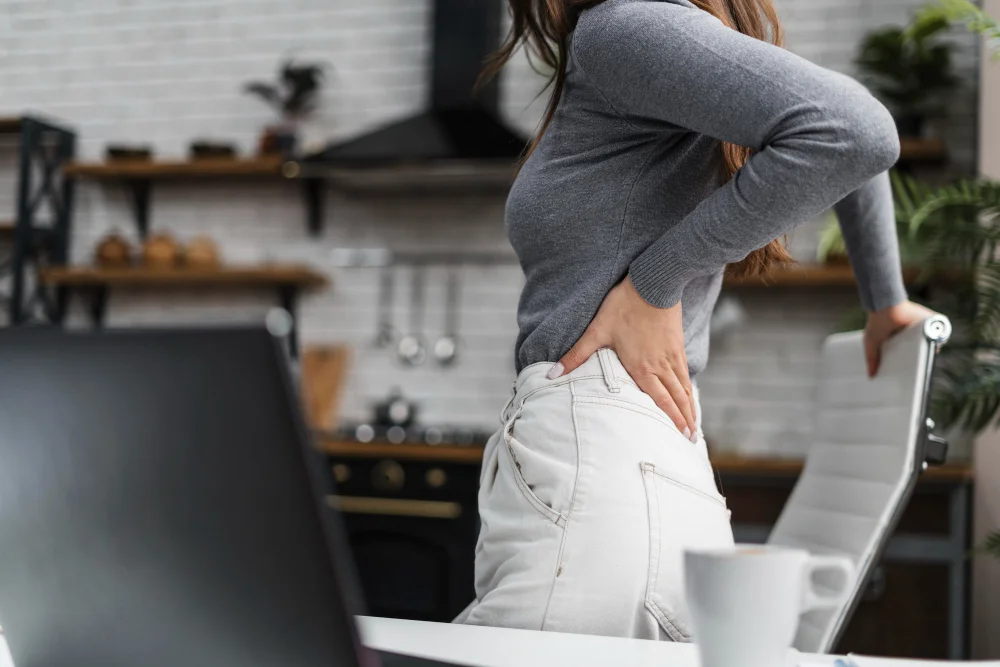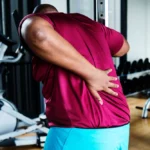That Twinge in Your Back Isn’t Just “Part of the Game”
Have you ever racked the weights after a heavy set of leg presses, stood up, and felt that dull ache—or worse, a sharp sting—in your lower back? I still remember my first encounter with it. I had loaded the sled a little too ambitiously (ego lifting, if I’m being honest) and walked out of the gym feeling like my spine had been replaced with a rusty hinge. At the time, I shrugged it off as normal. Now, after years of physiotherapy training, working alongside sports rehab specialists, and digging deep into the biomechanics of lower back stress during leg press, I know better.
Lower back pain after leg press isn’t inevitable—it’s a sign something’s off. And if you ignore it, it can escalate from a minor irritation to a career-ending injury.
In this article, we’ll break down why this pain happens, how to fix it, and most importantly, how to prevent it from coming back. We’ll pull in insights from physiotherapists, strength coaches, and biomechanics research so you’re not just getting “gym bro” advice—you’re getting proven, practical strategies.
Why the Leg Press Can Hurt Your Lower Back
1. Poor Spinal Positioning (Posterior Pelvic Tilt)
When your knees come too close to your chest at the bottom of the movement, your pelvis can tuck under (posterior pelvic tilt), rounding your lower back. This loads your lumbar spine in a compromised position.
Expert insight: Dr. Stuart McGill, a leading spine biomechanist, notes that repeated lumbar flexion under load is one of the fastest ways to irritate discs and strain supporting muscles.
My own experience: When I adjusted my range of motion to stop just before my lower back started rounding, the pain reduced within two sessions.
2. Excessive Weight and Compressed Discs
Heavy sled loading can put enormous compressive force on the lumbar spine. A 2019 study in the Journal of Strength and Conditioning Research found that seated and supine leg presses significantly increase spinal compression, especially when technique breaks down.
3. Weak Core and Glutes
If your core and glutes aren’t doing their job, your lower back will compensate during the press.
Quote from Coach James Harris, CSCS: “A weak core is like building a house on sand. No matter how strong your legs are, your spine will pay the price.”
How to Fix Lower Back Pain from Leg Press
Step 1: Check and Adjust Your Form
- Foot placement: Keep your feet shoulder-width apart, slightly higher on the platform to reduce hip flexion and lower back rounding.
- Range of motion: Stop before your pelvis starts to tilt back. Use a spotter or phone video to check.
- Lower back contact: Keep your lumbar spine pressed into the seat pad throughout the lift.
Step 2: Lighten the Load and Rebuild
Dropping the weight isn’t a sign of weakness—it’s smart. Work in a weight range where you can control every inch of the movement without losing form.
Step 3: Strengthen Your Core and Glutes
- Core stability: Planks, dead bugs, and Pallof presses.
- Glute activation: Glute bridges, hip thrusts, and banded walks.
Personal note: After adding 10 minutes of glute activation before leg day, I noticed not only less back pain but also better leg press performance.
Step 4: Improve Hip Mobility
Tight hamstrings and hip flexors can contribute to posterior pelvic tilt.
- Stretches: Half-kneeling hip flexor stretch, seated hamstring stretch.
- Mobility drills: 90/90 hip rotations, deep squat holds.
Step 5: Alternative Exercises While Recovering
If pain persists, switch to:
- Bulgarian split squats
- Step-ups
- Belt squats (removes spinal loading)
Prevention: Keeping Your Back Healthy Long-Term
- Warm up properly – Don’t jump straight into heavy sets. Start with dynamic stretches and light sled presses.
- Progressive overload, not ego lifting – Increase weight gradually.
- Regular form checks – Film your sets occasionally.
- Include posterior chain work – Deadlifts, good mornings, and hip thrusts help balance muscle development.
When to Seek Professional Help
If your lower back pain:
- Persists for more than a week despite rest and modification
- Radiates down your legs
- Causes numbness or weakness
…book an appointment with a physiotherapist or sports medicine specialist. Lower back injuries can escalate quickly if ignored.
FAQs
Q: Should I stop doing leg press altogether?
Not necessarily. Modify your form, reduce weight, and focus on mobility before deciding to remove it completely.
Q: Can a belt help?
A lifting belt can provide support, but it’s not a fix for poor technique.
Q: How long until I’m pain-free?
Mild strains can recover in 1–3 weeks with proper care; more severe cases may take months.
Final Thoughts
Lower back pain from leg press isn’t just a “gym nuisance”—it’s a red flag that your form, load, or mobility needs attention. I’ve been there, and I know how frustrating it feels to back off when you want to push harder. But trust me: a few weeks spent correcting the root cause is far better than months recovering from a serious injury.
Have you ever dealt with lower back pain from leg press? What adjustments worked for you? Share your experience—it might help someone else train pain-free.
External Sources:
- McGill, S. (2016). Low Back Disorders: Evidence-Based Prevention and Rehabilitation.
- Journal of Strength and Conditioning Research, 2019 study on leg press biomechanics.
Read Also: Treatment to Skin Damaged by Bleaching Cream?
Read Also: What Are the Physiotherapy Exercises for Knee Pain?




